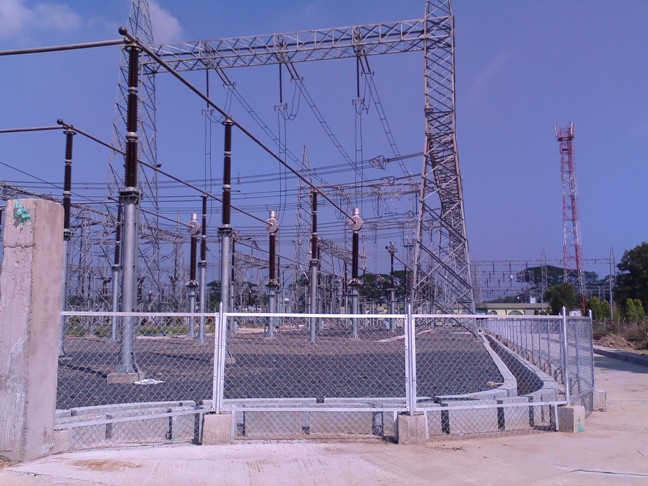Shapoorji Paloonji Group company Sterling and Wilson sees major opportunities in the power transmission and distribution (T&D) sector. Speaking at a select media roundtable in Mumbai, Pradyot Kumar Paine, Chief Operating Officer of the power T&D division of Sterling and Wilson, said that the company has end-to-end capabilities in the power T&D sector projects. “We are ready to deliver anything in the power T&D space across voltages from 415V all the way to 765kV, right from engineering to procurement to construction,” was how Paine summarized the capabilities of the power T&D division of his company.
Set up in 2008, the T&D division of Sterling and Wilson has already clocked revenues of Rs.700 crore in FY18. Paine explained that the opportunity space for EPC works in the power T&D sector was immense considering that a total market opportunity of Rs.2,60,000 crore exists. “For FY19, the government has already allocated Rs.1,00,000 crore that will be shared by Power Grid Corporation of India, public utilities and private players,” the COO said. He also observed that by 2022, India would have an installed power generation capacity of 330 GW and a peak demand of 235 GW. However, the current power T&D infrastructure represents only around 40 per cent of what would be needed by 2022.
Discussing the order book position of the power T&D division, Paine said that the current order book position of Sterling and Wilson was around Rs.1,500 crore, including orders under execution. “We are aiming at an order book position of Rs.3,000 crore by 2020,” noted Paine.
Touching upon its important orders on hand, P.K. Paine highlighted an order that it was executing for PGCIL in northeastern India. Sterling and Wilson is building and augmenting a series of 400kV substations in states like Manipur, Assam, Tripura, Arunachal Pradesh, etc. The order is part of the North Eastern Region System Strengthening Scheme. Placed in 2016 and valued at around Rs.235 crore, this was a prestigious order for Sterling and Wilson, Paine asserted, which will be completed within 2018. Paine recalled logistical challenges during project execution, especially because the contract involved shipment of over-dimension equipment like 500MVA transformers across long distances to difficult topographies in the north east.
With respect to substations, a number of 400kV GIS substations were under construction. A gas-insulated switchgear (GIS) substation is nowadays preferred as it takes significantly lesser geographical area as compared with the conventional air-insulated substation. Dwelling on key GIS equipment suppliers, Paine said that for GIS, Hyosung from Korea was a leading supplier. For high-voltage transformers as well as GIS, Sterling and Wilson has found a good partner in TBEA, a Chinese company that has set up its manufacturing facility in Gujarat.
On the GIS substation business, P.K. Paine discussed a long pipeline of orders including five in West Bengal, out of which two have been commissioned. At Chandigarh in Punjab, Sterling and Wilson is building a 220kV GIS substation. Orders for GIS substations are also expected from state utility Maharashtra State Electricity Transmission Co Ltd, after Sterling and Wilson recently emerged as L1 bidder.
Sterling and Wilson is executing a major underground cabling project involving 6.5 km of 132kV cables, associated with the Nagpur metro rail project.
Underground Cabling
Sterling and Wilson expects good business opportunity from underground cabling projects. P.K. Paine explained that underground cables offer several advantages over conventional overhead lines. For instance, underground cables require limited right of way. In urban centres, underground cables are preferred for better aesthetics and also to preempt power theft. Paine however observed that underground cabling, in the coming years, would be more prominent on the low-voltage (distribution) side rather than the high-voltage (transmission). Sterling and Wilson is executing a major underground cabling project involving 6.5 km of 132kV cables, associated with the Nagpur metro rail project. The company is also expecting orders for 132kV underground cabling works in Mumbai. Upcoming smart cities will also have extensive underground cabling works as the power distribution system will be so designed.
It may be mentioned that India is developing competency in the local manufacture of EHV cables. According to information available with T&D India, Finolex J-Power Systems also has the capability of producing EHV cables up to 500kV from its Shirwal plant in Maharashtra. Swiss company Brugg has also tied up with KEI Industries to locally produce EHV cables. However, the market for EHV cables above 220kV is yet to mature with current deployments seen mainly in the sub-220kV range.
Railway Electrification
P.K. Paine also discussed railway electrification as an emerging business opportunity but did express some reservations. The qualification criteria to bid for railway electrification works are currently stringent. This has led to a situation where only a few companies are currently eligible. “It is not just Sterling and Wilson, but other reputed contractors are also affected by this,” explained Paine. Nevertheless, Sterling and Wilson was keen to bid for railway electrification works, in partnership with eligible contractors. “We will bid for our first railway electrification project in the first quarter of FY19,” said Paine.
Prospects
P.K. Paine reiterated that business opportunities abound the power T&D sector but there are several challenges including paucity of skilled manpower. “Skilled manpower is scarce,” was Paine’s observation but he added that Sterling and Wilson believed in hiring fresh campus recruits and imparting extensive training. Paine also made a pertinent point that EPC contractors need to be versatile in their capabilities. Modern T&D power infrastructure involves special equipment, technology and execution abilities. Convention practices would not work and EPC contractors would need to develop competency and expertise to be able to match today’s power T&D needs. Paine pertinently observed that in the coming years, there will be increasing feed-in of electricity from renewable energy sources like solar and wind. Given that such green energy intermittent in nature, it would be of paramount importance to ensure that the country’s evolving power T&D grid is stable. “Grid stability will be critical,” P.K. Paine emphasized.

